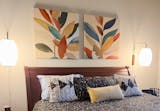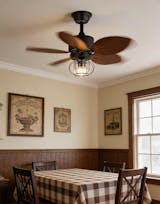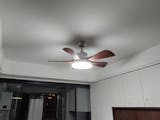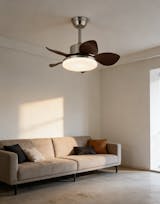Have you been spending a lot of time hanging out around the house lately? Sometimes, the more time we spend at home, the longer our to-do lists get. To ease the burden of ongoing homeowner obligations, it is important to provide appropriate lighting for specific tasks. Terry McGowan of the American Lighting Association (ALA) answers some of the most common questions homeowners have about lighting their active spaces
What is task lighting?
It is a type of lighting designed to properly illuminate common visual tasks in the home. Typically, such visual tasks are accomplished in a relatively small area, so the task lighting is localized rather than distributed throughout the room. Examples include reading, sewing, cooking, grooming, dressing, homework, laundry and puzzles.
Why does a task require special lighting?
Because many visual tasks can be difficult to see clearly—especially when older eyes are involved. Good task lighting reduces eye strain. There are many lighting fixtures and products specifically designed to illuminate task areas so that details can be seen clearly and easily with minimal glare.
=============================================================================================================================================================
How to improve task lighting in your home?
Table lamps, floor lamps, and directional wall sconces make excellent work lights and can be easily optimized to handle the task by installing a bulb with a higher light output in the fixture, changing the shade, or positioning the existing fixture to allow more light to reach the desired area.
Hubble Table Lamp Whether illuminating a cozy reading nook in your home or making your sophisticated living room look more sophisticated, this table lamp always shines. Its frame is made of all copper, with a simple design and full copper base, delicate texture, and strong lines, showing the beauty of elegance.
The Tripod HM8 Floor Lamp is a stylish and powerful floor lamp commonly used to provide lighting in work areas. It has three legs, similar to a tripod, so it's stable and looks stylish in the space. This floor lamp has an adjustable lamp head and neck, allowing you to adjust the direction and intensity of light as needed to meet different work needs.
===============================================================================================================================================================
What should I look out for to get a good task light these days?
Focus on functionality and appearance. Today's task fixtures can provide both, and the lighting professionals at ALA member showrooms can make sure you have the right features for the task you want to accomplish. When considering portable task lighting fixtures, consider the following features:
- Light source – Task fixtures that use LED light sources are highly efficient and long lasting. LEDs emit less heat than older incandescent light bulbs too.
- Amount of light – Specific tasks may require different amounts of light for optimal visibility.
- Adjustability – This allows the light to be directed where it is needed and for the size of the lighted area to be adjusted to cover the whole task area.
- Light color – LEDs come in a range of tints and colors often described as “warm” (reds and yellows) or “cool” (blues). The color appearance of the light is measured in kelvins (K), technically known as chromaticity. LED light bulbs and fixtures have a chromaticity rating printed on the bulb or carton that lists the chromaticity value.
- Dimmability – There are two options for dimming LEDs with electronic controls. The first option is simply a dimmer that adjusts the brightness of the LED. The second is a control that adjusts the brightness of the LED, as well as changes the color so that, as the light gets dimmer, it changes to a warmer tone. That type of dimming is known as “warm dim,” and is intended to match the familiar dimming characteristics of incandescent bulbs.
- Special features – Task lighting fixtures are available in a variety of types and designs so they can match the needs of the user as well as fit easily into the home and room décor. For example, task fixtures can be designed for either table or floor use, and there are versions with wheels for portability. Models with magnifying lenses and built-in lighting are designed to make reading easier for people with limited vision or hard-to-see tasks.
- Smart lighting – Certain types of LED bulbs and a growing number of lighting fixtures are “smart.” That means they can connect with other smart products in the home and be programmed to follow a schedule or be controlled wirelessly via a cell phone or other types of remote controls and systems.















